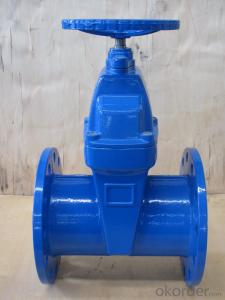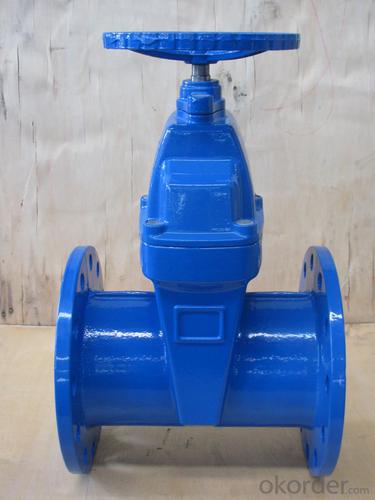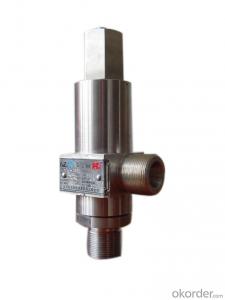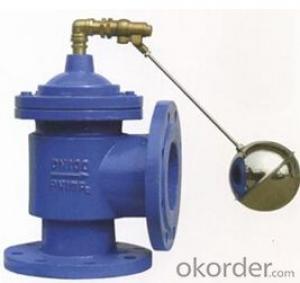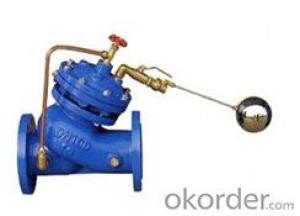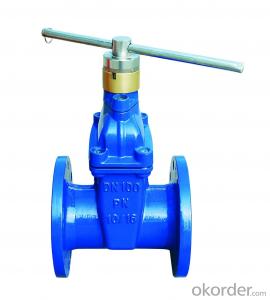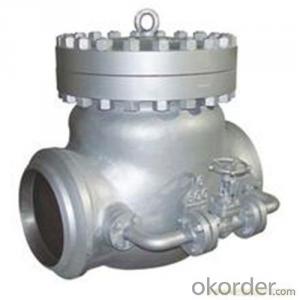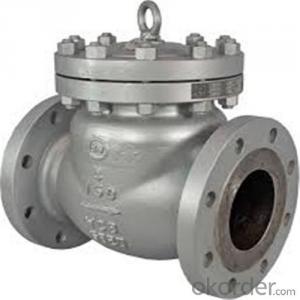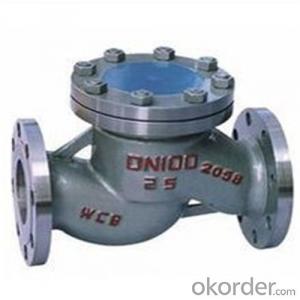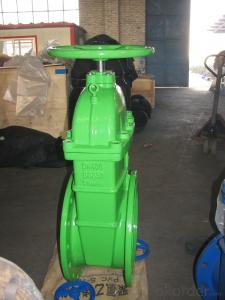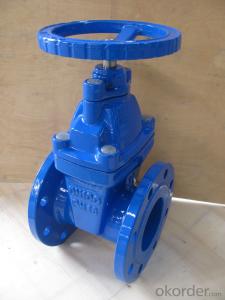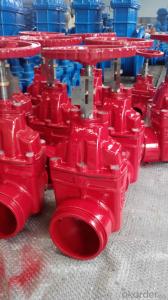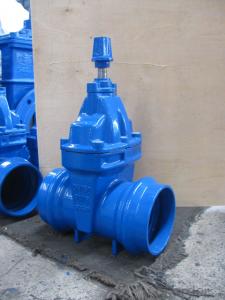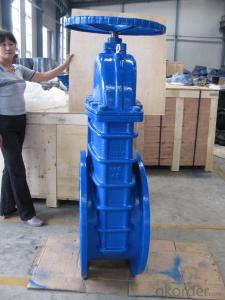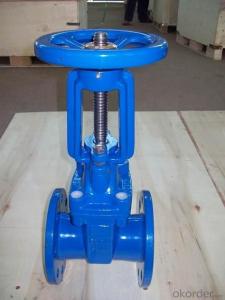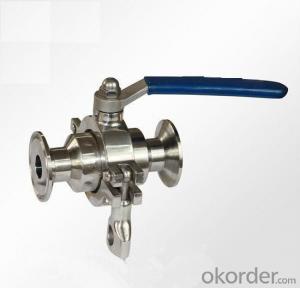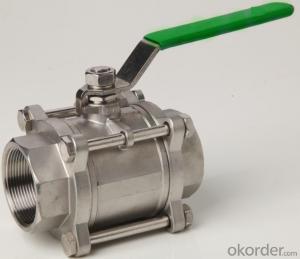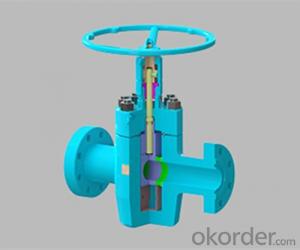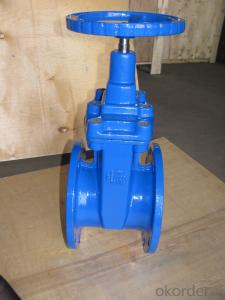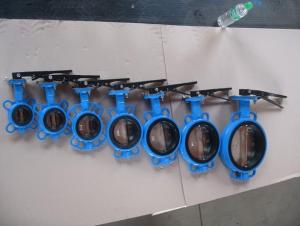Rising Stem Solid Wedge Gate Valve ISO5208
- Loading Port:
- China Main Port
- Payment Terms:
- TT OR LC
- Min Order Qty:
- -
- Supply Capability:
- -
OKorder Service Pledge
OKorder Financial Service
You Might Also Like
Type: | Non-Rising Stem |
Material: | Body: Cast Iron / Ductile Iron Wedge: Cast Iron / Ductile Iron Encapsulated with EPDM Seat: EPDM / NBR Shaft: SS410 Stem Nut: Brass O-ring: EPDM, NBR Wedge Nut: Brass / Bronze Hand Wheel: Ductile Iron
|
Operator: | Hand Wheel / Bevel Gearing / Square head / Electric actuator |
Face to Face: |
BS5163: 1986, DIN 3202 F4-F5, JIS B2002, ANSI B16.10
|
Flange: | BS4504, DIN 2532, JIS B2212, ANSI B16.10/ANSI B16.50
|
Working Pressure: | 16 Bar(200 PSI) |
Design and Manufacturer Standard : | BS5163, DIN 3352, JIS B2043 |
Test Standard: | API 598 BS6755 DIN 3230 JIS B2003 |
Application: | Water works, Sewage, Public facilties, Building industry, Petroleum, Chemical, Steel, Metallurgy, Paper Making Industry, Foods, Beverage, HVAC |
| | | | ||||||||
| | | | ||||||||
| | | | ||||||||
| | | | ||||||||
| | | | ||||||||
| | | | ||||||||
| | | | ||||||||
| | | | ||||||||
- Q: Is this possible? The valve is way too big to fit the rim. Is there a special inner tube for this rim? Thanks in advance.
- Sounds as if you need a tube with a Presta valve stem vs. a Schrader valve stem. Link below showing the difference.
- Q: The Hawker Tempest was the fastest piston powered airplane ever made, it had a sleeve valve engine. It was made obsolete, by the Me 262 and other jet engined fighters, But it's engine was the ultimate piston aircraft engine. Then piston engines became something for inexpensive planes, but why has the sleeve valve not undergone further development as a sports car engine?
- The main problem was the oil consumption, since a very tight seal required close tolerances that in turn called for very precise lubrication. As Wikipedia states (see link) if one wants to do away with poppet valves, and is willing to accept a very wide lubricated area, one might as well go all the way and go with a Wankel rotary engine which entirely eliminates the need for valve and thus timing gearing. Note that military engines do not have to be certified the way civilian aero engine need be, this in turn makes the process of introducing any change in an engine design extraordinarily expensive, hence general aviation piston engines are rather crude (but proven) design. For automotive engines, one of the concern is the economy of scale: it is pointless to make an engine, to invest in all the development cost, if only a handful are produced. And it is pointless to make an engine that is meant for a wide distribution unless the cost of the final product is attractive, and that the maintenance expertise is properly widespread. So again, innovation tends to be introduced very slowly. And you cannot count on auto racing to act as a test bench for such innovations, as the rules there are often actually meant to limit how innovative one can be...
- Q: i have a 1986 Ford Mustang 3.8L V6 automatic. i need to change to valve cover gaskets but im not sure if i can do it. what do i need to do? and do i need to ad something else other than new gaskets? thanks
- Valve cover gaskets are very easy to change. Just make sure you get good gaskets, and when you tighten the bolts back down make sure you alternate bolts back and forth, don't torque one down and then jump right to the next one or you'll warp the valve cover since its aluminum. Start with one bolt get it slightly snug, then go to the one in the opposite corner and do the same, keep doing that until you have them all slightly snug, then start slowly torquing them down until they're all set at the proper torque. (Sorry I don't know the torque on those bolts).
- Q: The valve on my radiator has numbers on it to determine the amount of air/steam leaving the heating system. what number should i put it on and how would i determine it
- I would think the easiest way would be to put a thermometer on the radiator (with the bulb in the air flow), turn the heat on to one setting and record the temperatures each half hour for about 4 hours. Then, turn the adjustment to a higher (or lower) number and repeat that. That way, you'd know which way to turn to set it. Of course, the level at which you'd be comfortable would be found by trying different settings. Assuming the adustment is a valve, valves in the USA will open by turning counter-clockwise. Closing is, of course, clockwise. Hope that helps. EDIT: I received your email - I don't mind at all! OK, so you have only one valve for all the radiators. Without knowing anything else, I'd say you just removed the part called the bonnet (the upper half of a valve). It shouldn't matter which number it's set on if it's reinstalled correctly. When a valve is removed, the best way to put back is to open it slightly (turn counterclockwise to a low number), then reinstall the bonnet. Once it's back in, it should work like normal. If that doesn't work, perhaps you can get a plumber or a local handyman to check it. As to the upper ones being airlocked, it really sounds like there is a blockage in the supply line. I am assuming this is steam-heat radiator that is supplied by a boiler-type heating unit?
- Q: what do the doctors do and is it dangerouse? aslo how do you get a cloged valve?
- they are dangerous and you get them sometimes form cholesterol and stuff, the doctors clean it out sometimes unless you are in real danger when you have it removed
- Q: I bought my first car recently. but it has a high idle and smoking problem, i already replaced the spark plugs. I've been reading about the exhaust gas re-circulation valve. but i cant find it. where exactly is the EGR valve located in a 1999 KIA Pride?
- the EGR wont reason a hissing noise, if the EGR replaced into undesirable, there could be a soft stumble off the line, or tough idle. a hissin noise sounds like a vacuum leak someplace. open the hood while the vehicle is working and notice in case you may hear the place the hissing is coming from. it ought to be coming from a line someplace.
- Q: Is there something else i can use to lubricate my trumpet valves besides valve oil....I don't have any at the moment but really need to lubricate the valves.
- Honestly, vaseline will screw up your valves over long uses as the viscosity of the material will make your valves stick harder. Baby oil has minerals in it that will eventually build up on the valves and start corroding it. The best lubricant you can use is saliva because it will not create build up. It is cheap and effective but not recommendable. I remember my valves were stuck right before a show, but I spit on them and they worked fine. Its a short term solution, but go out and buy some valve oil.
- Q: does anyone have a bicuspid aortic valve and wrestle? my cardiologist told me that wrestling would put too much strain on my heart but i can feel that i'm fine when i wrestle so if you have a bicuspid aortic valve and wrestle or know anyone who has that disfunction and wrestles please let me know
- If your bicuspid aortic valve doesn't leak or is not stenosed, it should not be a significant problem.
- Q: Im 17 with a Bicuspid Aortic valve and hypertension (around 160/85). Only other family member with teenage hypertension is grandfather. Im on 2 different types of hypertension medication which only brings blood pressure down to 138/75. It still jumps to 157/85 on medication. I have leakage of my valve that has not gotten worse or better since starting the medication (first checked in September, medication started in Novemberish, now April). No stenosis yet. Any idea what im looking forward to in next couple years? Or is this stuff spontaneous?
- Hey okorder /... I am also posting a page from the American Heart Association about High Blood Pressure hopefully you'll read about it some and begin to learn about some of the ways you might help keep yours lower with food and watching some things like sodium (salt) keeping it around 1500mg a day (2/3 of a teaspoon) on all your food... limiting soda or pop and energy drinks and trying to stick with 8 8 oz glasses of water, fruits and veggies and Good stuff..
- Q: Hi, this is a part 2 question to the one I posted last night. After turning the water shut off valve on my toilet back on, it didnt start to hammer till about 1 min pasted. When the hammering is happening I look in the toilet tank and see air bubbles coming out of the base of the fill valve and the water coming out of the fill tube isn't smooth and flowing its kinda step wise/ in intervals. I forgot to mention that I live in an apartment, does this affect anything?My official question is, is this an air bubble problem or is it a rubber gasket/ rubber seat problem?This is a new building only about 2 yrs old, so parts can't be that bad right?
- First check for a kinked or twisted supply connector hose. You may also have a piece of rubber gasket/washer debris stuck in the valve body (seat washer) or in the fill valve itself (from the connector compression washer). Shut off the water supply at the angle stop and disconnect the supply hose from the fill valve nipple under the toilet tank. Get a bucket and put the end of the supply connector hose/tube into the bucket and open the supply valve again. If it still hammers when unrestricted like this, the obstruction is in the anglestop valve body. The water pressure may force it out, but if it doesn't, you'll have to shut off your main water supply to clean the stop or replace it. If it doesn't hammer when unrestricted, the problem is now in the new fill valve, and is probably a deteriorated piece of the compression washer in your old supply connector hose or tube that has been pushed into the fill valve. Since it's a Fluidmaster, you can disassemble the head of the valve and remove any visible obstruction or just replace the top part.
Send your message to us
Rising Stem Solid Wedge Gate Valve ISO5208
- Loading Port:
- China Main Port
- Payment Terms:
- TT OR LC
- Min Order Qty:
- -
- Supply Capability:
- -
OKorder Service Pledge
OKorder Financial Service
Similar products
Hot products
Hot Searches
Related keywords
